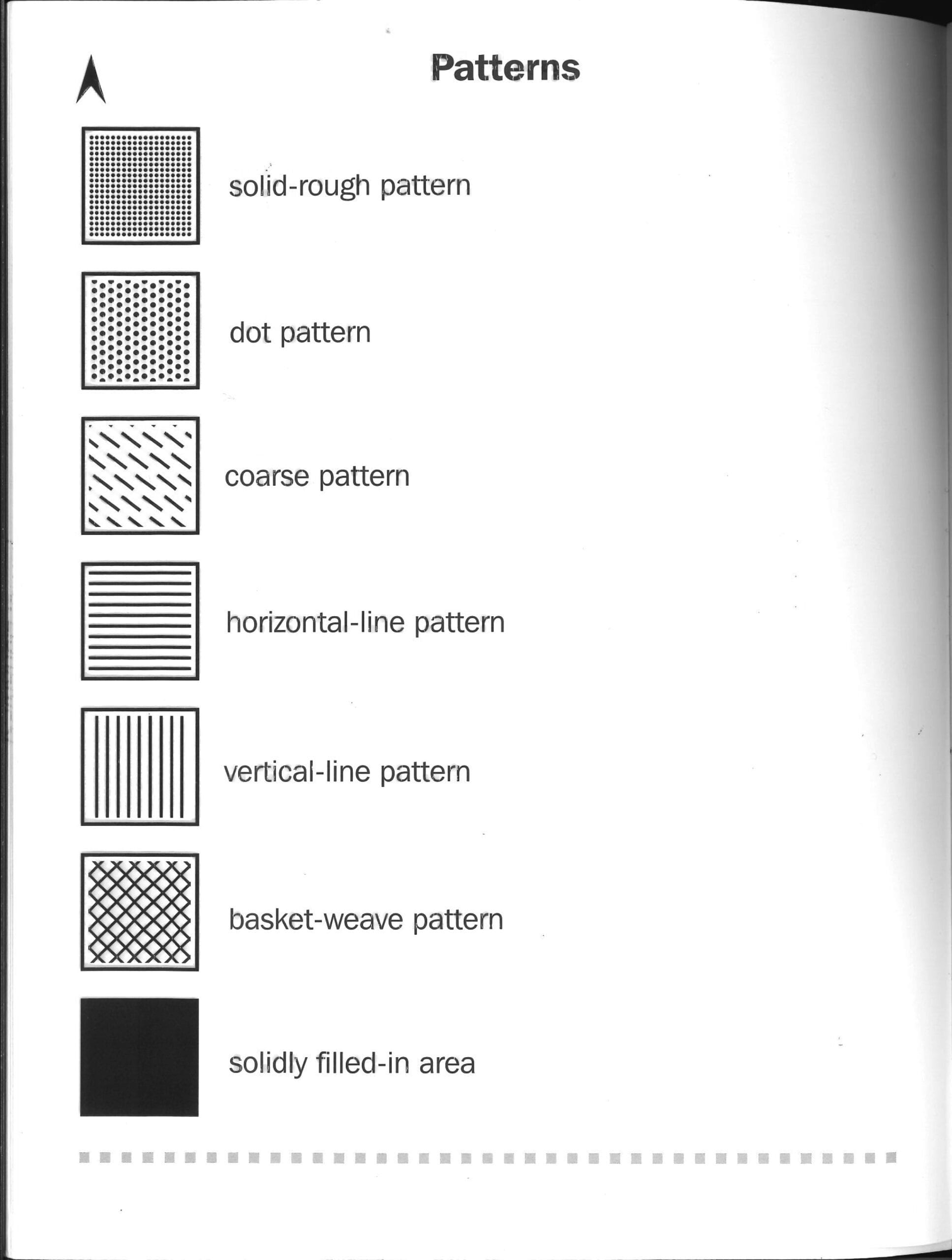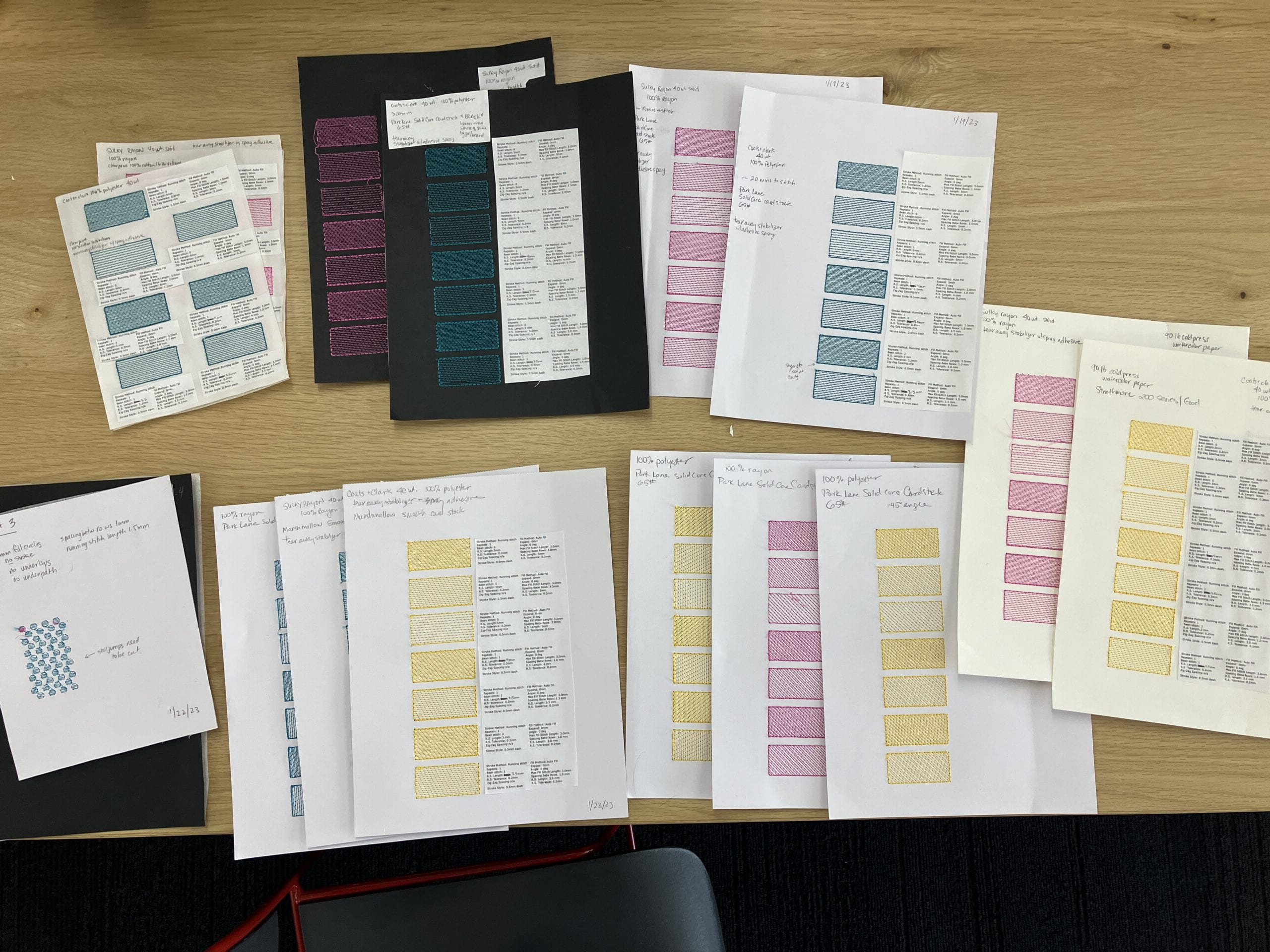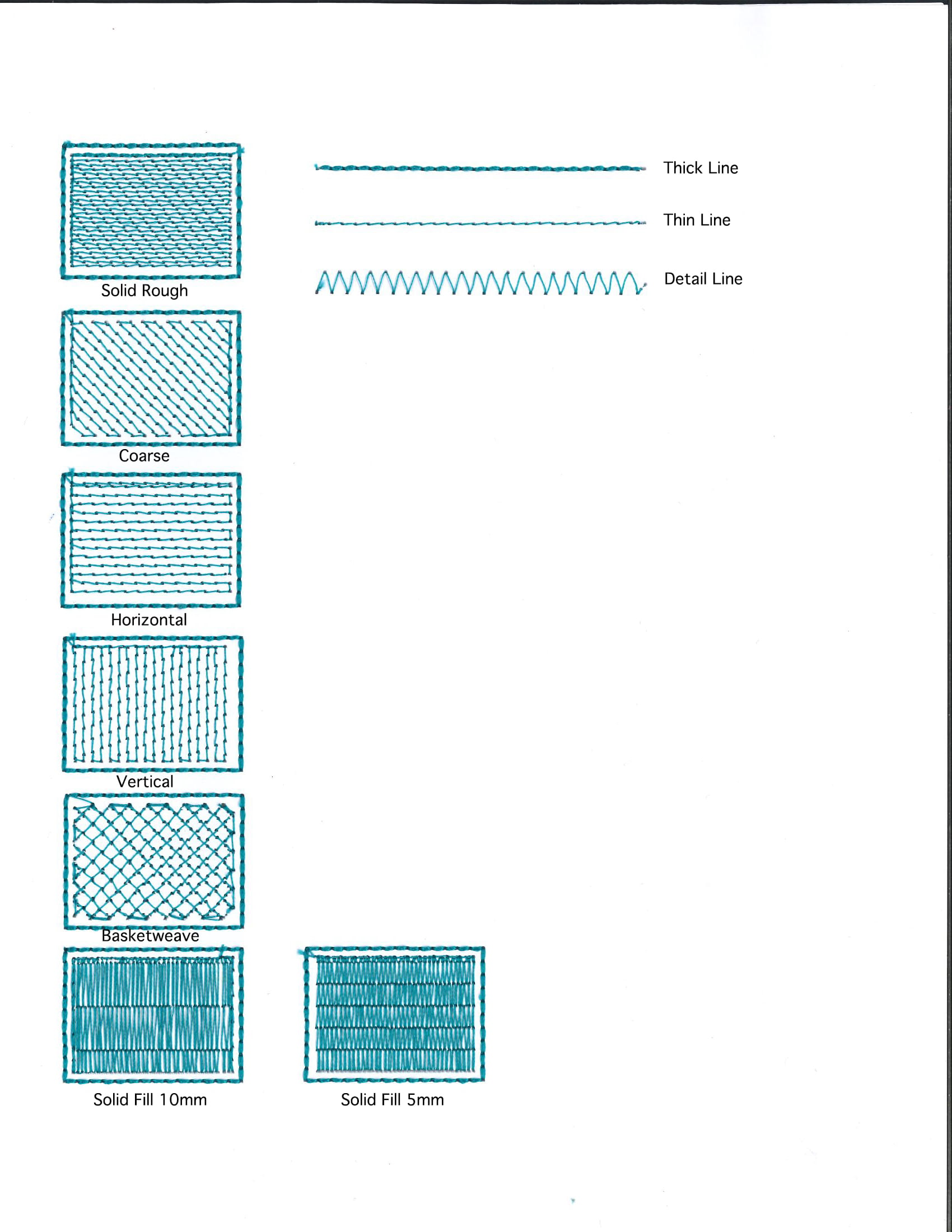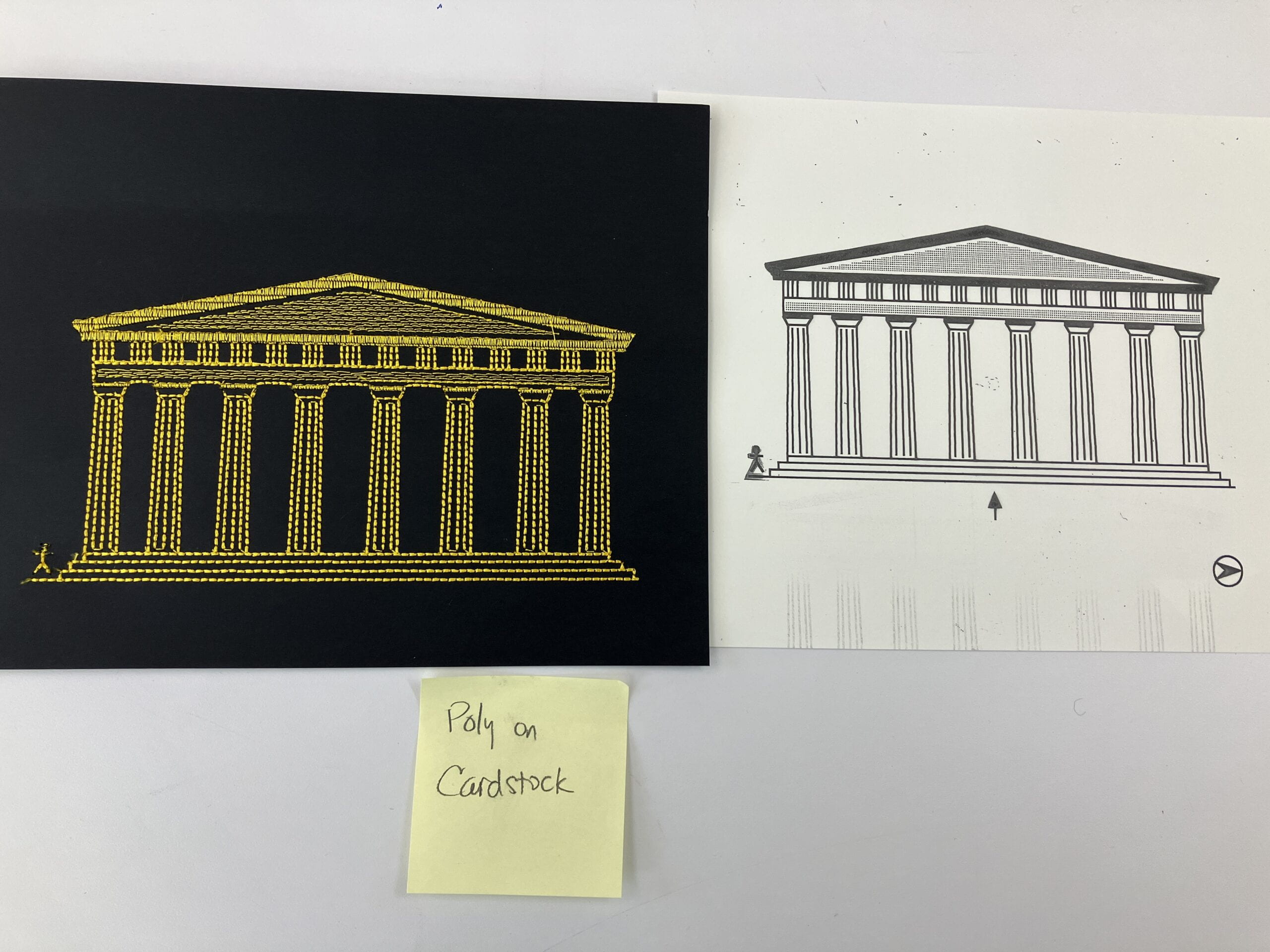After observations at the Intrepid Museum as well as feedback from Blind and low vision user/experts, I decided to focus on incorporating more embroidery into interpretations of the naval patches.
In partnership with Blind and low vision tactile graphics experts, I developed a line and pattern lexicon to be used for creating tactile interpretations of historical textiles with digital embroidery. Guidelines from the book Art Beyond Sight were used as a starting point. Our goal was to develop a method for creating tactile graphics that were digital, low-cost, and easily reproducible by Art Museums and Historical Sites, while making connections back to the artifacts’ original materials. We decided to work with paper, as opposed to fabric. This choice was made because of ease of sourcing materials and cost, but also to leave open the possibility to combine embroidery and swellform for layered and more varied tactile graphics.
Pattern samples were created and evaluated by BLV user/experts. Additionally, various papers were tested for ease of stitching and durability. Cardstock (black and white), Yupo, Vellum, and Watercolor paper were all tested. We also evaluated thread types, including cotton, rayon, and polyester.
With some patterns established, we created two tactile graphics based on images intended for swellform from the ABS book.
Evaluations by BLV tactile graphics experts helped determine which stitches and patterns were both effective and pleasing to touch.
With this knowledge, I then revisited the original naval patches and created interpretations using the lexicon we created.





